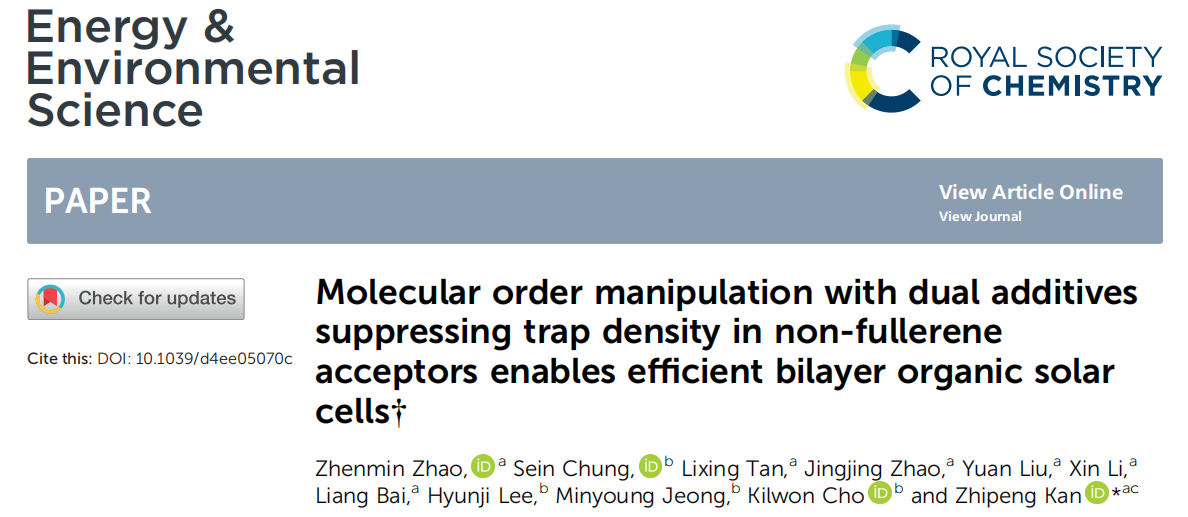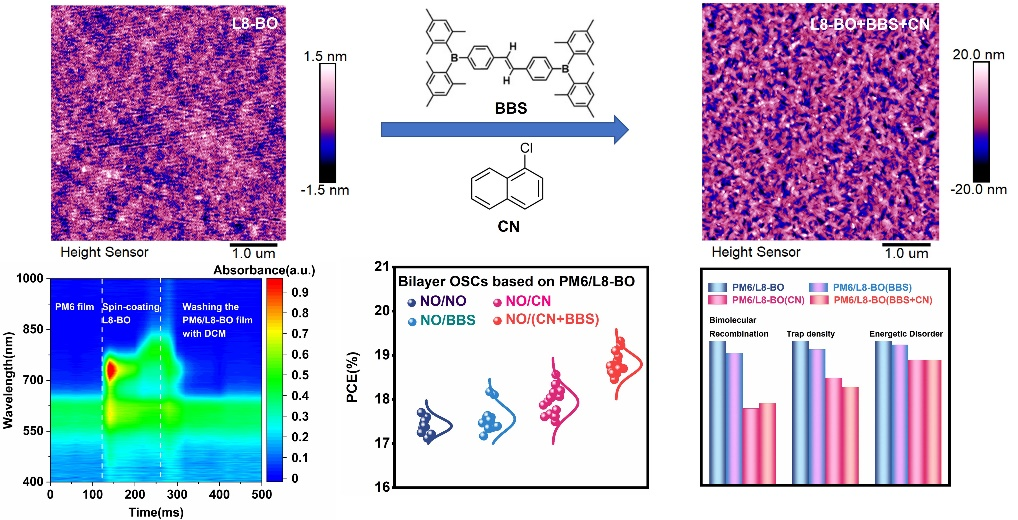Recently, the team led by Professor Zhi-Peng Kan from the School of Physical Science and Technologyat Guangxi University has achieved new progress in the field of double-layer organic solar cells. By using solid-liquid hybrid additive, they balanced the aggregation size and arrangement order of non-fullerene acceptor molecules, enabling the development of highly efficient double-layer organic solar cells. The related findings were published in the journal Energy & Environmental Science under the title "Molecular order manipulation with dual additives suppressing trap density in non-fullerene acceptors enables efficient bilayer organic solar cells." The first author of the paper is Zhen-Min Zhao, a 2020 doctoral student from the School of Physical Science and Technology, and the corresponding author is Professor Zhi-Peng Kan from the same school. Guangxi University is the sole corresponding institution.
Double-layer organic solar cells suppress bimolecular charge recombination and energy disorder by avoiding the mixing of donors and acceptors, making them highly promising for industrial applications. With the development of Y6 and its derivatives, the photovoltaic performance of double-layer organic solar cells has surpassed 19%. Among these, regulating the aggregation of the acceptor phase through additives to achieve larger aggregation sizes is a practical approach to enhance charge transport properties and improve device efficiency. However, the increase in aggregation size is accompanied by uncontrolled orientation distribution, leading to reduced molecular order and higher defect density, which negatively impacts device performance. Addressing this challenge, the team innovatively employed a solid-liquid hybrid additive strategy to achieve a flocculent structure with larger aggregation sizes and more ordered molecular arrangements, reducing defect density and enabling highly efficient and stable double-layer organic solar cells.

In this study, the research team selected a high-boiling-point solvent additive, 1-chloronaphthalene (CN), and a solid additive, trans-bis(dimethyl boron)stilbene (BBS), which exhibits excellent electron transport properties, to promote the aggregation of acceptor molecules. The study found that CN increased the film crystallinity of L8-BO through J-aggregation, forming a fibrous network structure. When BBS was added alongside CN, a novel flocculent structure emerged, reducing the degree of J-aggregation, improving molecular alignment, and lowering defect density. As a result, devices treated with the hybrid additives achieved an optimal efficiency of 19.32%, and after 1500 hours of storage, they retained 91% of their initial efficiency. This discovery confirms the feasibility of manipulating molecular alignment through solid-liquid hybrid additives to further reduce trap density, highlighting the potential of hybrid additives in the fabrication of highly efficient double-layer organic solar cells.

It is reported that this research was supported by the National Natural Science Foundation of China, the Guangxi Natural Science Foundation, and the "Guangxi Astronomy and Space Science and Technology" project.